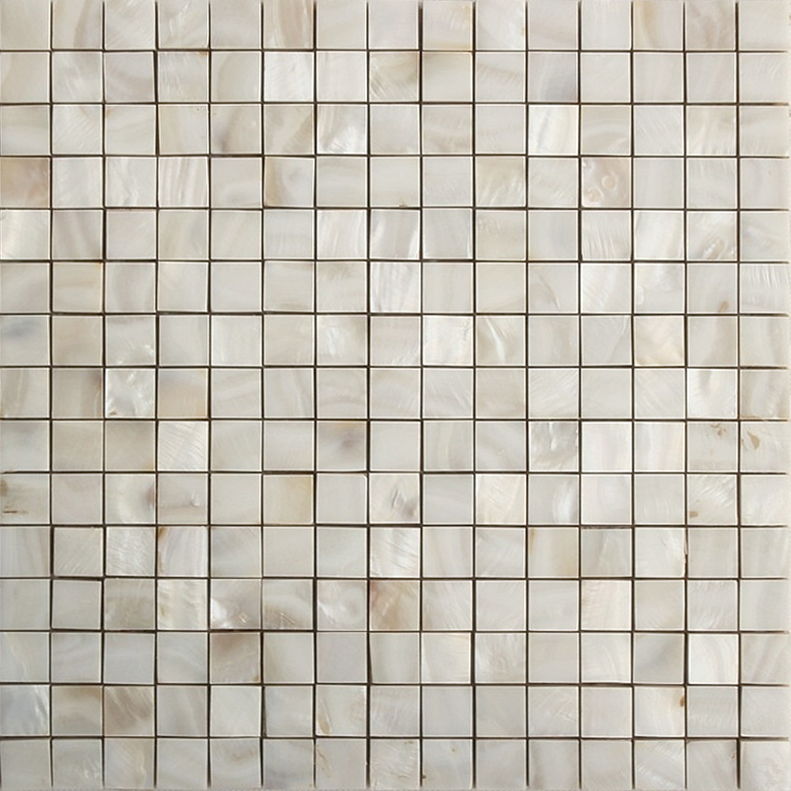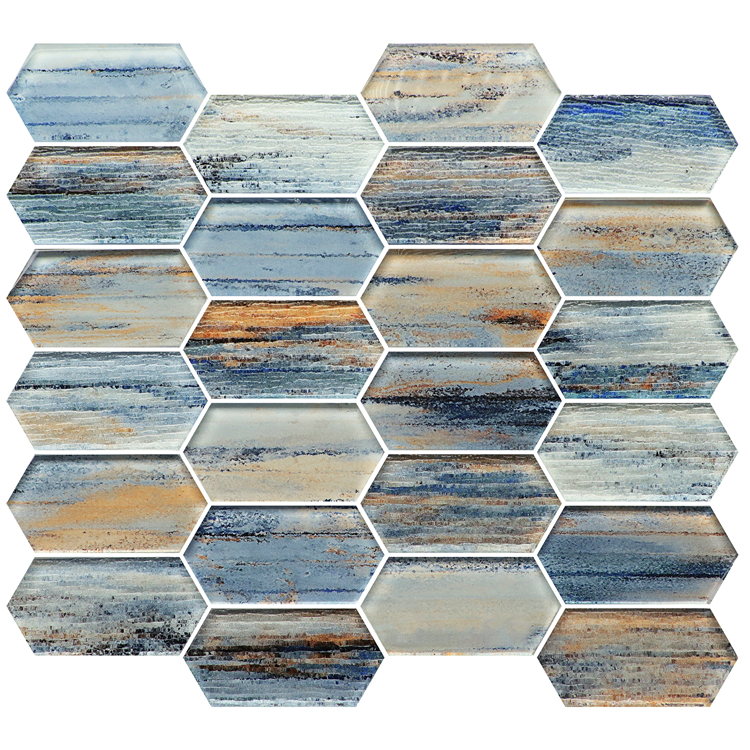Views: 0 Author: Site Editor Publish Time: 2025-05-22 Origin: Site
When it comes to choosing the right flooring for residential or commercial spaces, mosaic flooring and tiles are two of the most popular options. Each has its own distinct advantages, designs, and applications that make them suitable for various types of environments. Whether you are renovating your home, designing a commercial space, or considering new flooring options for a pool or wellness area, understanding the differences between mosaic flooring and tiles can help you make a well-informed decision.
So, what is the real difference between mosaic flooring and tiles? The key differences lie in their composition, design options, durability, and installation process. Mosaic flooring generally refers to small, often colorful pieces of materials such as glass, ceramic, or stone that are arranged in intricate patterns. In contrast, tiles are larger, flat surfaces that can be made from a variety of materials like porcelain, ceramic, and natural stone. Both flooring types offer unique aesthetic possibilities but serve different practical purposes depending on the space and its usage.
The purpose of this article is to guide you through the primary distinctions between mosaic flooring and traditional tiles. We will compare their features in terms of design flexibility, installation, maintenance, cost, and more to help you choose the best option for your project.

What is Mosaic Flooring?
What is Tile Flooring?
Key Differences Between Mosaic Flooring and Tiles
Benefits of Mosaic Flooring
Benefits of Tile Flooring
Installation Process for Mosaic Flooring vs. Tiles
Maintenance and Durability of Mosaic Flooring and Tiles
Cost Considerations for Mosaic Flooring and Tiles
Conclusion
Mosaic flooring refers to a design that is made by arranging small, often colorful pieces of materials like stone, glass, or ceramic into intricate patterns or images. These materials are generally set into a bed of concrete or resin, creating an overall floor surface.
Mosaic floors have been around for centuries, dating back to ancient Greece and Rome, where they were often used in baths, palaces, and temples. Today, mosaic flooring continues to be a popular choice for its unique aesthetic appeal and versatility in design. The small pieces of material allow for endless creative possibilities, from geometric patterns to abstract designs.
There are different types of mosaic flooring, including glass mosaics, ceramic mosaics, and stone mosaics. Each type of mosaic offers its own set of advantages, such as reflective qualities in glass mosaics or the earthy textures in stone mosaics. Mosaic flooring is commonly used in spaces like kitchens, bathrooms, pools, and spas due to its artistic potential and durability.
Tile flooring is made up of larger, flat pieces of material such as porcelain, ceramic, natural stone, or vinyl that are laid down in a grid pattern to cover a floor surface. Unlike mosaic flooring, which consists of small pieces arranged into a design, tile flooring typically features uniform pieces that are often square or rectangular.
Tile flooring is highly durable and versatile, making it a popular choice for both residential and commercial settings. It is commonly used in areas where durability and ease of maintenance are priorities, such as kitchens, bathrooms, and entryways. Tile flooring offers a broad range of finishes, colors, and designs, from sleek modern porcelain tiles to rustic terracotta options.
Tiles are easier to clean compared to mosaic flooring, and they also tend to be more affordable in certain materials like ceramic. However, unlike mosaics, tiles can sometimes lack the personalized, artistic touch that mosaic flooring provides.
Mosaic flooring and tiles share similarities, but they differ significantly in several key areas:
| Feature | Mosaic Flooring | Tile Flooring |
|---|---|---|
| Material | Small pieces of glass, stone, or ceramic arranged in patterns | Large, flat pieces of ceramic, porcelain, or stone |
| Design Flexibility | Highly customizable with intricate patterns and colors | Generally simpler patterns, but a variety of finishes and colors |
| Installation | More complex, requires skilled labor | Easier and faster, can often be DIY |
| Durability | High, but can be prone to grout cracking over time | Very durable, depending on material |
| Maintenance | More difficult to clean due to small grout lines | Easier to clean and maintain |
| Cost | Often more expensive due to intricate design | Can be more affordable depending on material |
Mosaic flooring offers several benefits that make it a standout choice for certain spaces.
Aesthetic Appeal: Mosaic floors are incredibly versatile in design. The small tiles can be arranged in countless ways, allowing for a highly personalized aesthetic. Whether you're creating intricate designs or abstract art, mosaic flooring offers endless possibilities.
Durability: Mosaics are highly durable, especially those made from glass or stone. They can withstand heavy foot traffic and are resistant to wear and tear over time.
Water Resistance: Due to their small size and the tight grout lines, mosaic floors can be highly water-resistant, making them ideal for bathrooms, kitchens, and pool areas.
Unique Patterns: With mosaic flooring, you can create unique patterns that stand out and add character to your space. This is particularly popular in high-end homes, luxury hotels, and spas.

Tile flooring also offers distinct advantages that contribute to its widespread use:
Variety of Materials: Tiles come in a wide range of materials, including porcelain, ceramic, natural stone, and vinyl. This makes them suitable for a wide variety of applications and aesthetics.
Durability: Tile is known for its long lifespan. Porcelain and ceramic tiles, in particular, are resistant to scratches and moisture, making them suitable for high-traffic areas.
Easy to Clean: Tiles are much easier to clean compared to mosaics. The larger, fewer grout lines mean less dirt and grime get trapped, making maintenance simpler.
Cost-Effective: Tile flooring is generally more affordable than mosaic flooring, especially when opting for standard ceramic tiles.
Installing mosaic flooring requires skill and precision due to the intricate arrangement of small pieces. The process involves laying a bed of adhesive, placing each mosaic tile into the desired position, and grouting. Because mosaics can have complex patterns, it often requires professional installation to ensure the design is aligned correctly.
Installing tile flooring is typically less complicated than mosaic flooring. After preparing the subfloor, tiles are laid down with adhesive and then grouted. Larger tiles are easier to handle and require less time to install. Additionally, DIY enthusiasts often find tile installation manageable with the right tools.
Mosaic flooring can require more upkeep than standard tile flooring due to the small grout lines that can trap dirt and grime. Regular cleaning is essential to avoid grout discoloration. Sealing the grout can help maintain its appearance and prevent moisture from penetrating the tiles.
Tile flooring is much easier to clean and maintain. The smooth surface of tiles, especially porcelain and ceramic, makes them resistant to staining. Grout lines, while present, are generally less pronounced than in mosaics, making tile floors more straightforward to clean.
The cost of mosaic flooring is often higher than tile flooring due to the labor-intensive installation process and the materials used in mosaic designs. While ceramic tiles can be relatively inexpensive, high-end materials like natural stone or custom mosaics can raise the price significantly.
Labor-intensive installation
Expensive materials (e.g., glass, marble)
Higher cost for custom designs
Affordable options (e.g., ceramic, vinyl)
Installation is generally less expensive
Custom designs can increase the price
In summary, choosing between mosaic flooring and tile flooring comes down to your project’s specific needs and priorities. If you're looking for a unique, customizable design with artistic potential, mosaic flooring may be the best option. On the other hand, if you prioritize ease of installation, cost-effectiveness, and maintenance, tile flooring could be the better choice.
Consider your space, budget, and desired aesthetic when making your decision. Both options have their own set of advantages, and the right choice depends on the intended application, style, and long-term care you are willing to provide.